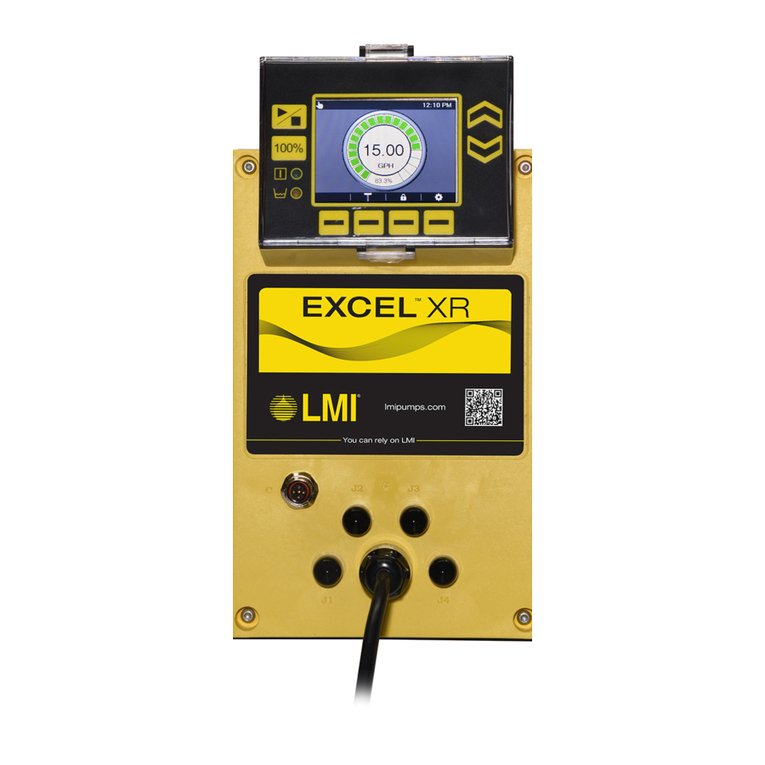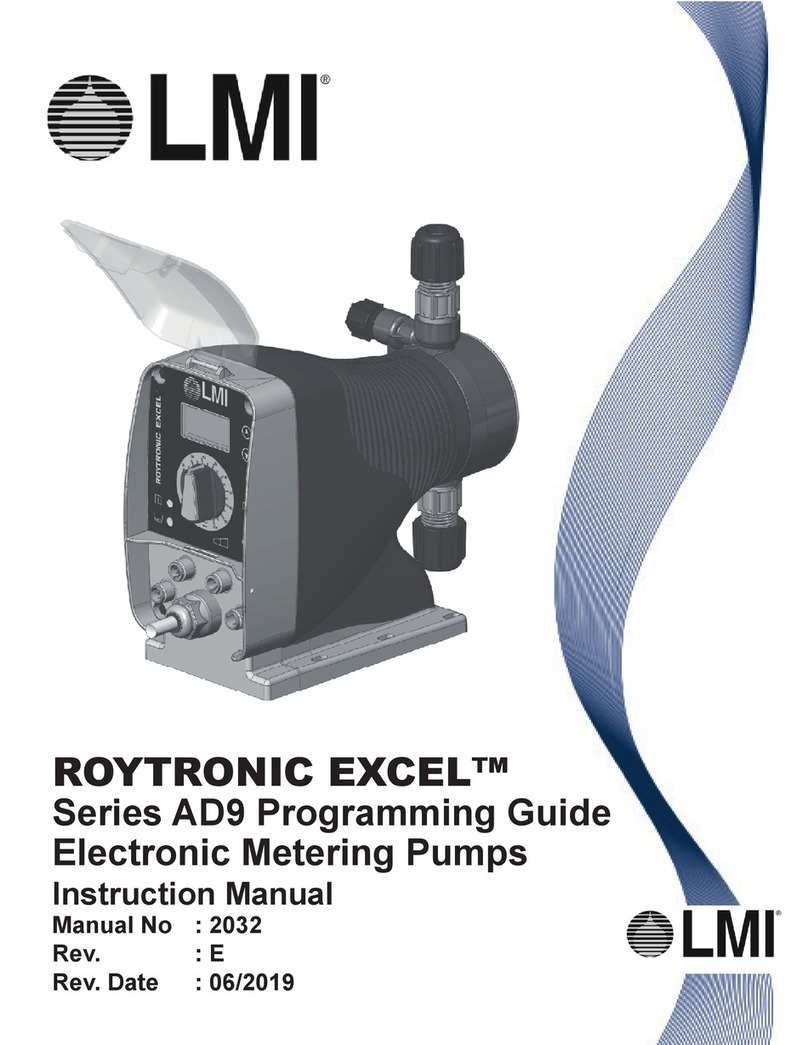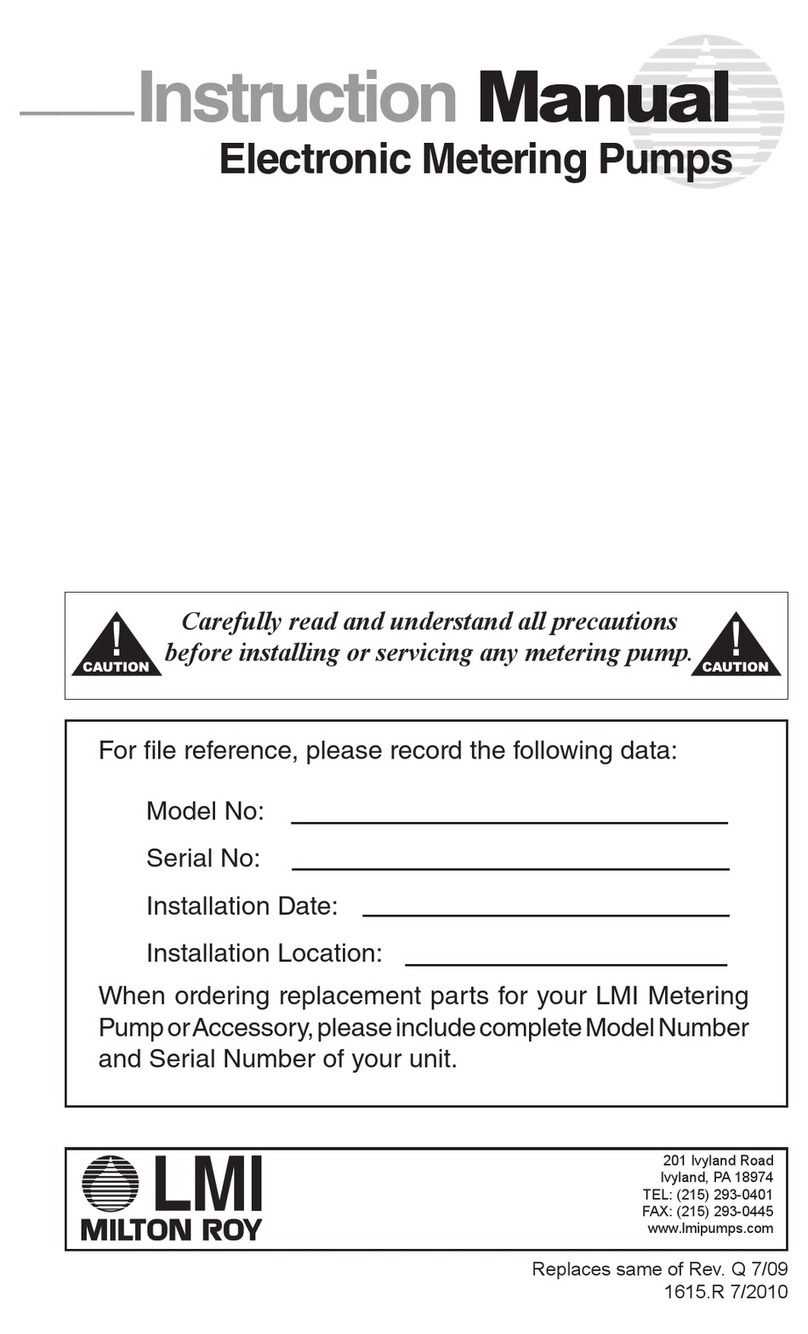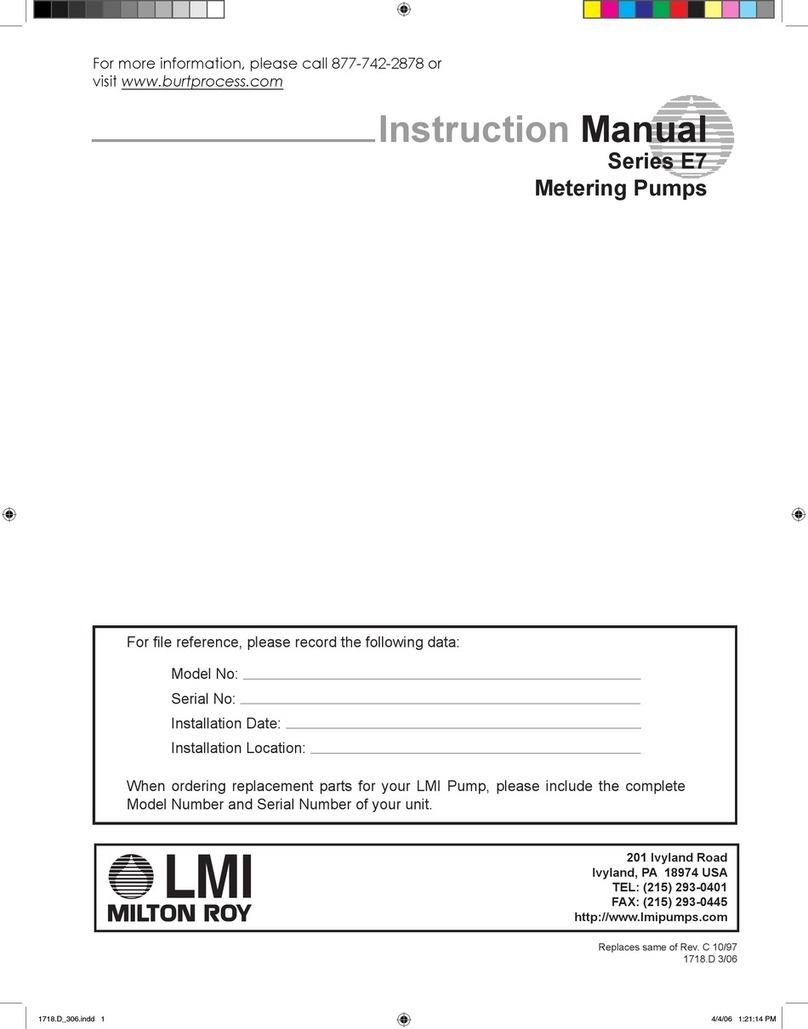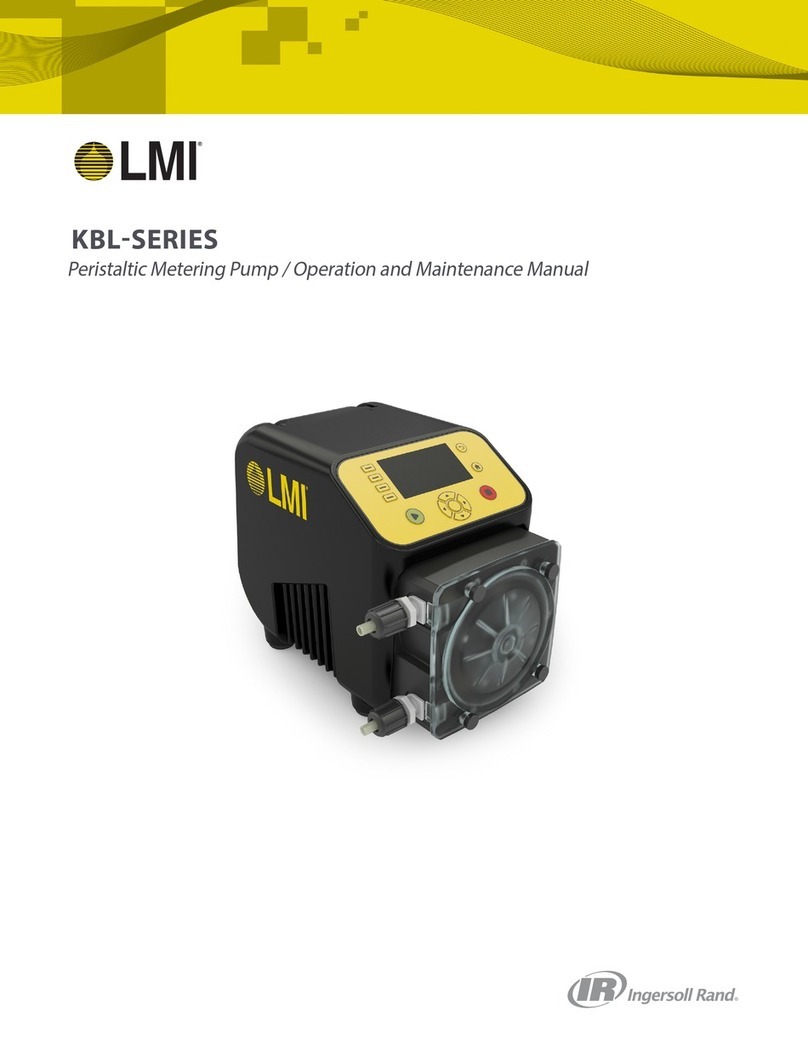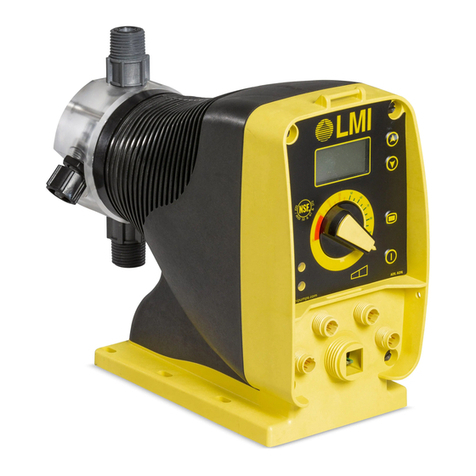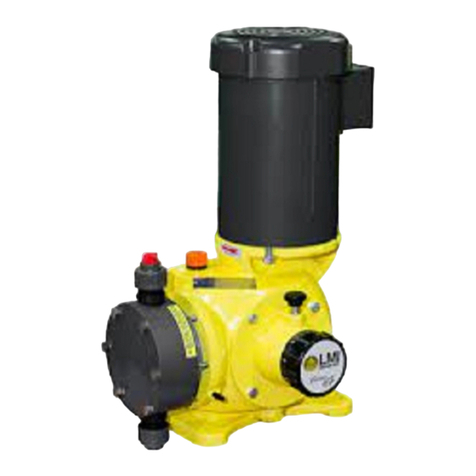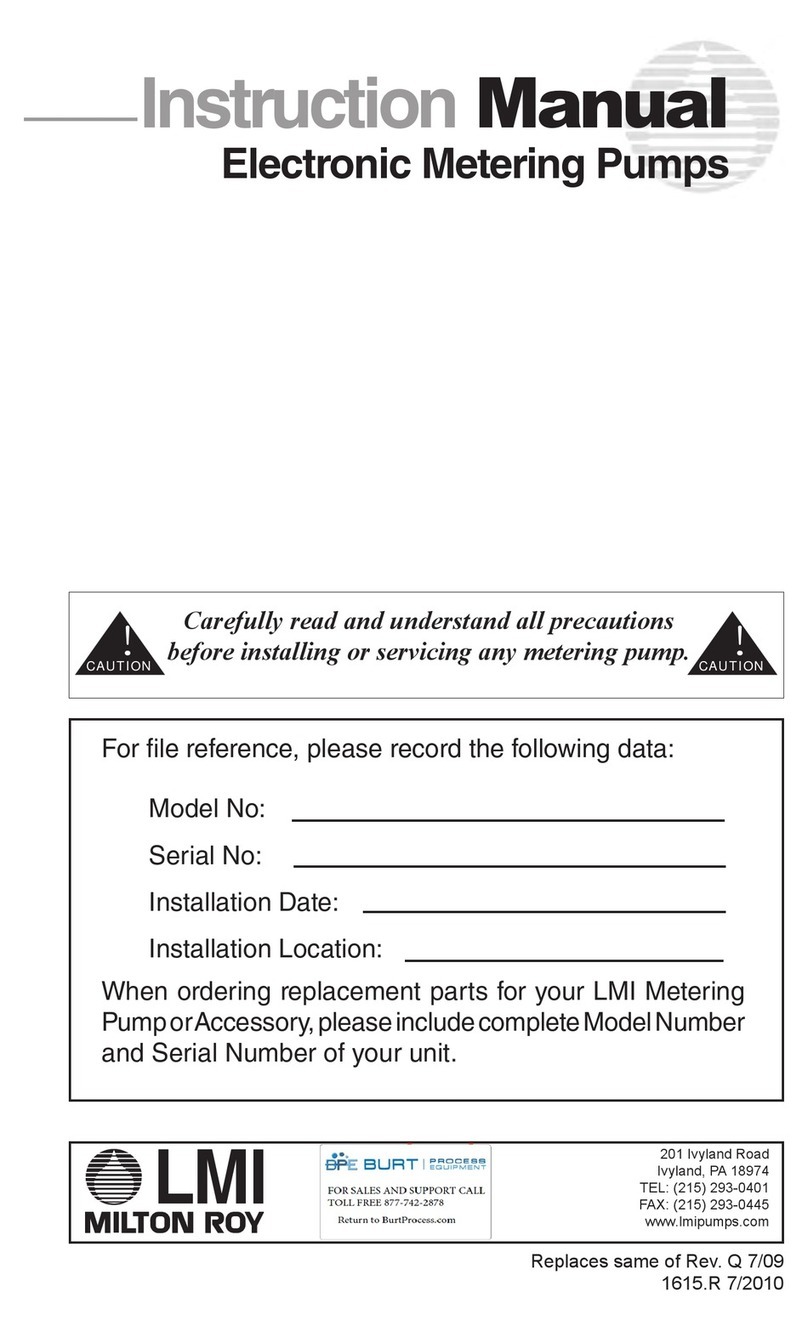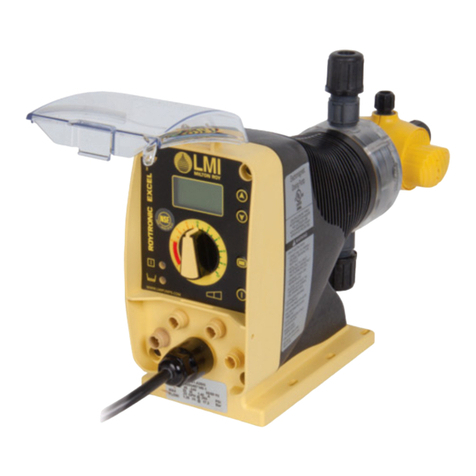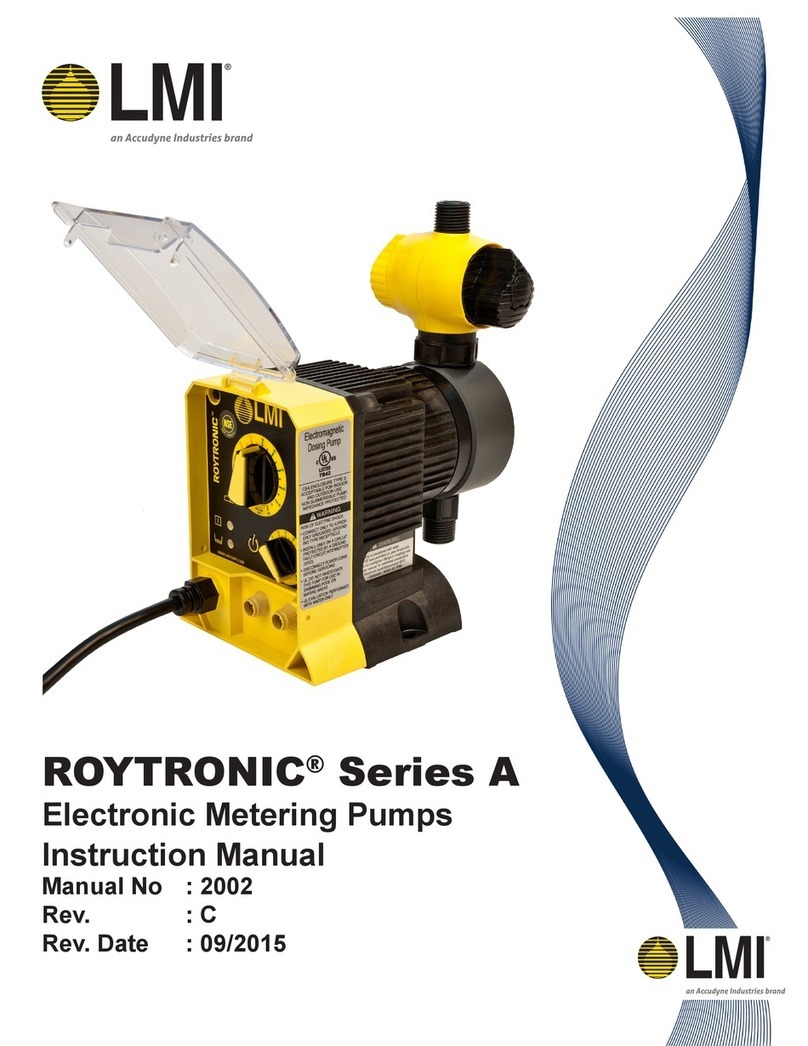
5
2.0 Installation
2.1 Unpacking
Pumps are shipped f.o.b. factory or distributor warehouse and the title passes to the customer when the carrier signs for receipt of the
pump. In the event that damages occur during shipment, it is the responsibility of the customer to notify the carrier immediately and
to file a damage claim.
Carefully examine the shipping carton upon receipt from the carrier to be sure there is no obvious damage to the contents. Open the
carton carefully so accessory items inside will not be damaged or lost. Examine all material and check against packing list to be sure
that all items are accounted for and intact.
2.2 Safety Precautions
When installing, operating, and maintaining the Series G Pump, keep safety considerations foremost. Use proper tools, protective
clothing, and eye protection when working on the equipment and install the equipment with a view toward ensuring safe operation.
Follow the instructions in this manual and take additional safety measures appropriate to the liquid being pumped. Be e tremely careful
in the presence of hazardous substances (e.g., corrosives, to ins, solvents, acids, caustics, flammables, etc.).
2.3 Storage
Temporary Storage (Less than 6 Months)
It is preferable to store the material under a shelter in its original package to protect it from adverse weather conditions. In condensing
atmospheres, follow the long term storage procedure.
Long Term Storage (Longer than 6 Months) Primary Considerations
The primary consideration in storage of pump equipment is to prevent corrosion of external and internal components. This corrosion
is caused by natural circulation of air as temperature of the surroundings change from day to night, day to day, and from season to season.
It is not practical to prevent this circulation which carries water vapor and other corrosive gasses, so it is necessary to protect internal
and external surfaces from their effects to the extent possible.
When the instructions given in this section are completed, the equipment is to be stored sheltered; protected from direct exposure to
weather. The prepared equipment should be covered with a plastic sheet or a tarpaulin, but in a manner which will allow air circulation
and prevent capture of moisture. Equipment should be stored 12 inches or more above the ground.
Pump Drive
1. Flood the gearbox compartment with a high grade lubricating oil/rust preventative such as Mobile Oil Corporation product
“Mobilarma 524.” Fill the compartment completely to minimize air space and water vapor condensation. After storage, drain this
material and refill the equipment with the recommended lubricant for equipment commissioning.
2. Remove drive motor and liquid end, and brush all unpainted metal surfaces with multipurpose grease (NLGI grade 2 or 3). Store
these unattached.
Ele tri al Equipment
1. Motors should be prepared in the manner prescribed by their manufacturer. If information is not available, dismount and store
motors as indicated in step 3 below.
2. Dismount electrical equipment (including motors) from the pump.
3. For all electrical equipment, place packets of Vapor Phase Corrosion Inhibitor (VPCI) inside the enclosure, then place the entire
enclosure, with additional packets, inside a plastic bag. Seal the bag tightly closed.
2.4 Handling of Pump
To avoid damaging the pump while moving or installing a Series G Pump, follow the instructions below. Refer to Figure 3.
1. Place a sling under the motor flange.
2. Cross the two ends of the sling and close the loop.
3. Place the other end of the sling under the liquid end mounting flange.
4. Make sure the entire unit is well balanced before attempting to move the pump.
To avoid possible damage to either pump or personnel, bolt pump down as soon as it is in position.
CAUTION
!
